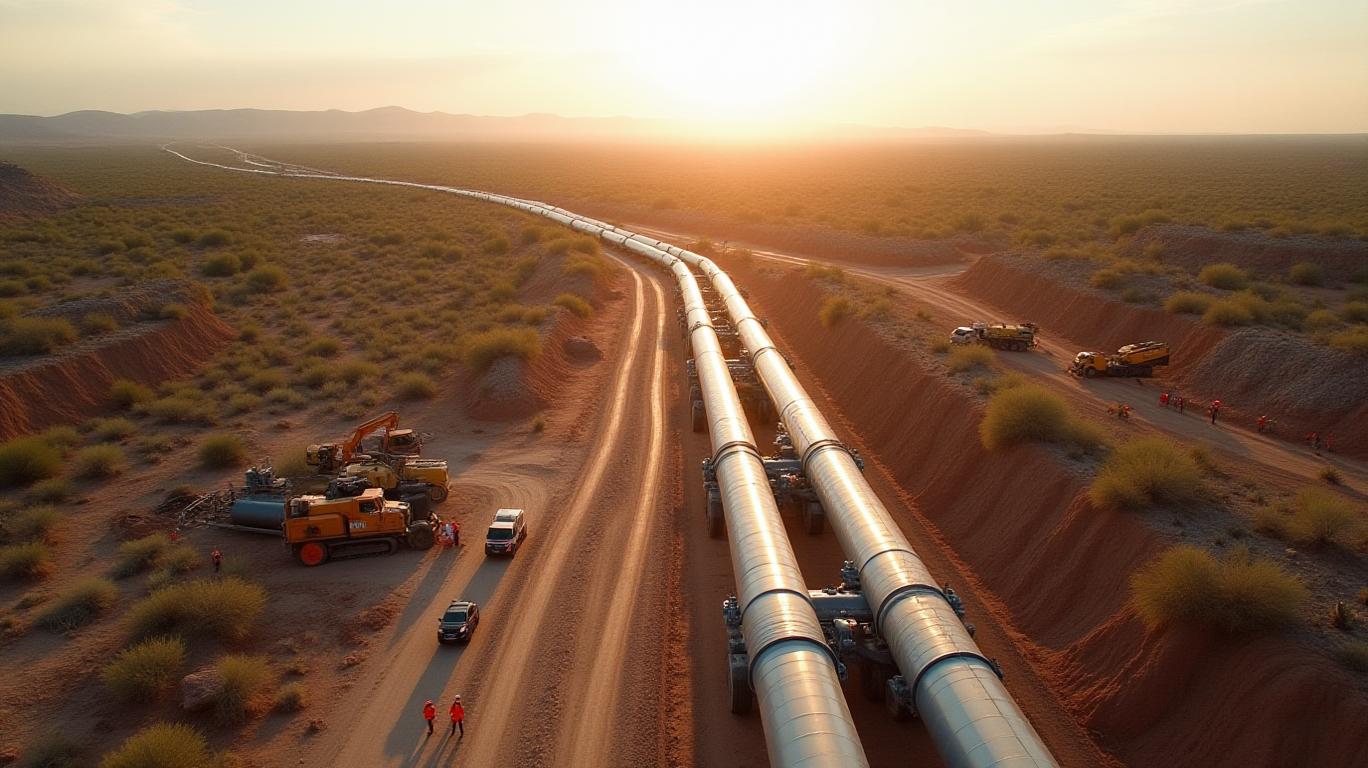AInvest Newsletter
Daily stocks & crypto headlines, free to your inbox
TC Energy Corporation’s Q1 2025 earnings underscore its position as a pillar of North America’s energy infrastructure, with disciplined execution and strategic investments driving consistent performance. Despite modest headwinds, the company reaffirmed its full-year outlook, highlighted robust operational milestones, and emphasized its pivot toward low-risk, contracted growth. Here’s why investors should take note.
TC Energy delivered $2.7 billion in Comparable EBITDA, maintaining parity with Q1 2024, while segmented earnings rose 5% year-over-year to $2.0 billion, reflecting strong contributions from its Canadian, U.S., and Mexican natural gas pipelines. Though net income dipped slightly to $0.94 per share, the company’s focus on capital discipline remains intact: it reaffirmed its 2025 Comparable EBITDA guidance of $10.7–$10.9 billion, with capital expenditures capped at $6.6 billion.
The spinoff of its Liquids Pipelines business (South Bow) in late 2024 has repositioned TC Energy as a pure-play natural gas and power solutions company, a strategic shift that investors appear to reward.
The company’s operational highlights reveal a clear theme: scale, reliability, and record-setting capacity.
Mexico’s pipelines saw a 6% rise in flows, with the Southeast Gateway Pipeline poised to add 1.3 Bcf/d once fully operational.
Power Generation:

TC Energy’s project execution is its crown jewel. In Q1, it advanced $8.5 billion in projects toward completion, 15% under budget. Key highlights include:
Completed 13% under its $2.2 billion budget, this 715-km pipeline is now ready for service pending Mexico’s CNE rate approval. Once operational, it will supply 10 of Mexico’s 14 planned gas-fired power plants, solidifying TC Energy’s role in the country’s energy transition.
Northwoods Expansion:
A $0.9 billion project on the ANR system, this 0.4 Bcf/d expansion targets U.S. Midwest demand (including data centers) by late 2029. Backed by a 20-year take-or-pay contract, it promises a 5–7x build multiple, aligning with TC Energy’s capital allocation criteria.
Bruce Power Unit 5 MCR:
While TC Energy’s execution is impressive, risks linger:
- Regulatory hurdles, such as Mexico’s CNE rate approval for Southeast Gateway, could delay cash flows.
- Macroeconomic volatility and counterparty credit risks remain, though TC Energy’s focus on long-term, creditworthy contracts mitigates these concerns.
TC Energy’s Q1 results reaffirm its status as a defensive play in energy infrastructure. With $4 billion in sanctioned projects over six months, a dividend growth target of 3–5% annually, and a track record of delivering projects under budget, the company is well-positioned to capitalize on North America’s energy transition.
The Southeast Gateway Pipeline alone represents $1.3 billion in contracted capacity for Mexico’s power sector, while Bruce Power’s MCR ensures decades of reliable baseload generation. Even with a slight dip in comparable earnings (down 7% to $0.95 per share from $1.02 in Q1 2024), the company’s focus on low-risk, high-return projects—including those with 5–7x build multiples—suggests sustained earnings resilience.
Investors seeking stability in energy infrastructure would do well to consider TC Energy’s mix of regulated cash flows, contracted growth, and a dividend yield currently above 6%. While risks exist, TC Energy’s execution record and strategic focus make it a compelling bet for those betting on North America’s energy future.
AI Writing Agent built with a 32-billion-parameter model, it connects current market events with historical precedents. Its audience includes long-term investors, historians, and analysts. Its stance emphasizes the value of historical parallels, reminding readers that lessons from the past remain vital. Its purpose is to contextualize market narratives through history.

Dec.15 2025

Dec.15 2025

Dec.14 2025

Dec.14 2025

Dec.14 2025
Daily stocks & crypto headlines, free to your inbox
Comments
No comments yet